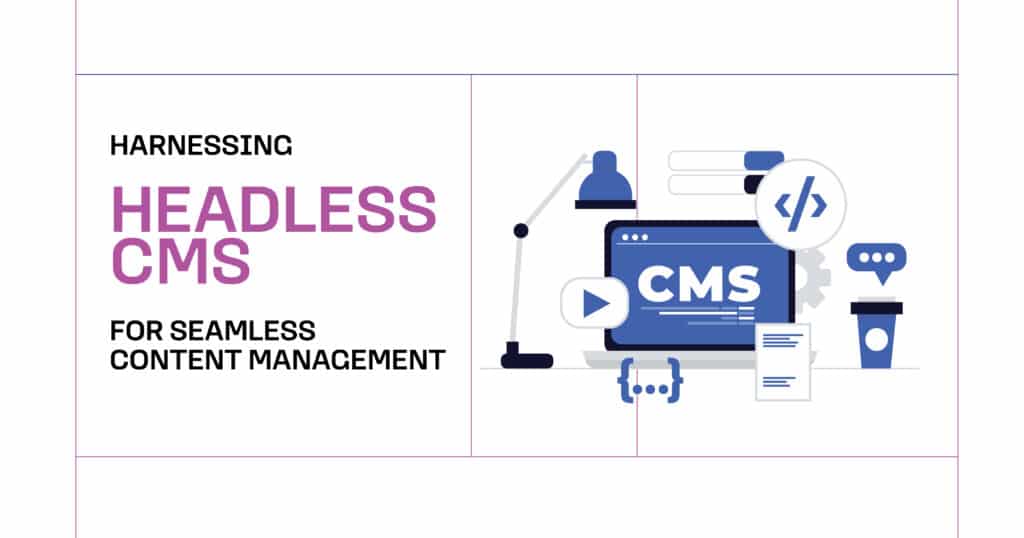In the rapidly evolving digital landscape, delivering consistent and engaging content across multiple channels is more important than ever. Traditional content management systems often struggle to keep up with the demands of modern businesses that require flexibility, speed, and scalability. The Headless CMS is a revolutionary approach that decouples the backend content repository from the frontend presentation layer. This API-driven CMS architecture enables seamless integration with various platforms and devices, empowering marketers and developers to create rich digital experiences effortlessly.
According to recent studies, businesses leveraging headless CMS solutions report up to a 40% increase in content delivery speed and significantly enhanced omnichannel content consistency. With the rise of digital experience platforms, a content management system that supports agile workflows and scalable content infrastructure is no longer optional but essential. By adopting a decoupled CMS or content as a service model, organizations can future-proof their content strategies and meet their audience wherever they are, whether on the web, mobile, or emerging technologies.
In this guide, we’ll explore how harnessing a headless CMS can transform your content operations, streamline workflows, and deliver seamless, omnichannel digital experiences.
Benefits of Headless CMS for Content Management
Headless CMS technology offers a range of advantages that make it a powerful choice for modern businesses seeking flexible and efficient content management solutions. Unlike traditional CMS platforms that combine the content repository and presentation layer, a headless CMS separates these components, enabling developers and marketers to work independently and innovate faster. This approach supports a truly omnichannel strategy by delivering content seamlessly across websites, mobile apps, IoT devices, and more.
By adopting a headless CMS, organizations can significantly improve content scalability, accelerate time to market, and enhance user experiences. It also enables better integration with existing digital tools and services, creating a flexible content infrastructure that adapts to evolving business needs. Here are some of the key benefits that highlight why headless CMS is becoming the go-to content management system for forward-thinking companies:
- Greater flexibility in how and where content is displayed, allowing content to be reused across multiple platforms without duplication. This means businesses can maintain consistency while tailoring experiences for different channels.
- Improved developer freedom thanks to API-driven architecture, which supports integration with various frontend frameworks and technologies, speeding up development cycles and innovation.
- Faster content delivery as decoupling the backend from the frontend reduces dependencies and streamlines updates, enabling real-time publishing and quicker site performance.
- Enhanced scalability and future-proofing by supporting new channels and devices as they emerge, allowing companies to stay ahead in a fast-changing digital environment.
- Easier content personalization because content can be dynamically delivered based on user context or preferences, improving engagement and conversion rates.
- Stronger security since the separation between content management and presentation reduces the attack surface, helping protect sensitive data and maintain compliance.
Integration Capabilities with Existing Systems
One of the standout features of a headless CMS is its ability to seamlessly integrate with a wide range of existing systems and technologies. Unlike traditional content management systems that can be rigid and limiting, a headless CMS uses APIs to communicate with various platforms, tools, and services, making it highly adaptable to different business environments.
This API-driven approach allows businesses to connect their content infrastructure with customer relationship management (CRM) systems, marketing automation platforms, e-commerce solutions, and analytics tools without disrupting existing workflows. Such integrations enable a unified digital ecosystem where content flows effortlessly between systems, improving operational efficiency and providing a holistic view of customer interactions.
Moreover, headless CMS can easily support new and emerging technologies, including voice assistants, smart devices, and augmented reality applications, by delivering content wherever it’s needed. This flexibility ensures that organizations can extend their digital reach and create innovative experiences without rebuilding their entire content management framework.
Improving Content Delivery Speed and Efficiency
In today’s fast-paced digital world, speed and efficiency in content delivery are crucial to engaging audiences and staying competitive. Headless CMS plays a vital role in enhancing how quickly and effectively content reaches users, enabling businesses to respond swiftly to market demands and user expectations.
Decoupled Architecture Enables Faster Updates
Because a headless CMS separates the backend content management from the frontend presentation, updates to content or design can happen independently. This means developers can implement frontend changes without waiting for backend modifications, and content teams can publish updates without affecting the site’s underlying code. This separation reduces bottlenecks and accelerates the overall content delivery process.
API-Driven Content Delivery
Headless CMS relies on APIs to serve content, allowing it to be delivered directly to any platform or device. This approach eliminates the need for rendering content through traditional templates, reducing server load and speeding up the response time. The API-driven method supports caching and content distribution networks (CDNs), which further enhance delivery speed by serving content from servers closest to the user.
SEO Optimization with Headless CMS
Optimizing content for search engines remains a top priority for any digital strategy, and a headless CMS offers several advantages that can enhance SEO performance. Unlike traditional CMS platforms, which often bundle content management with rigid frontend structures, a headless CMS provides developers and marketers the flexibility to implement SEO best practices more effectively.
Customizable URL Structures and Metadata
With a headless CMS, teams can define clean, customizable URL structures that improve search engine crawling and indexing. Because the frontend is separated from the backend, developers have full control over meta tags, headers, alt texts, and schema markup. This level of customization helps boost organic rankings by ensuring content is accurately and comprehensively described for search engines.
Faster Site Speed and Mobile Optimization
Site speed is a critical factor in SEO rankings, and headless CMS architectures contribute to faster load times by delivering content via APIs and content delivery networks. Additionally, the flexibility to design responsive, mobile-friendly frontends enhances user experience, which search engines prioritize when ranking sites. Improved performance on mobile devices also increases engagement and reduces bounce rates.
Comparing Headless CMS with Traditional CMS
As content needs grow more complex and multi-platform, the limitations of traditional content management systems become more apparent. While traditional CMS platforms like WordPress or Joomla offer an all-in-one approach by combining content creation and presentation, they often lack the flexibility required for delivering content across today’s wide range of digital channels.
In contrast, headless CMS decouples the backend content repository from the frontend delivery layer. This separation allows for greater flexibility, faster performance, and seamless omnichannel content delivery. Below is a comparison to help illustrate the key differences:
| Feature | Traditional CMS | Headless CMS |
| Architecture | Monolithic (couples backend and frontend) | Decoupled (backend only, frontend agnostic) |
| Content Delivery | Tied to a specific frontend (e.g., themes) | API-driven delivery to any device/channel |
| Flexibility | Limited to built-in templates and tools | High flexibility with custom frontends |
| Omnichannel Support | Limited or requires plugins | Built-in API support for all platforms |
| Developer Freedom | Restricted by CMS platform capabilities | Full control using modern frameworks |
| Scalability | Often limited due to platform constraints | Easily scalable across digital ecosystems |
| Performance Optimization | It may be slower due to rendering logic | Faster delivery via APIs and CDNs |
| Content Reusability | Hard to repurpose across platforms | Easily reusable across multiple channels |
Future Trends in Headless CMS Technology at BloomHouse Marketing
The future of headless CMS technology is bright and full of exciting possibilities. As digital experiences become more immersive and personalized, headless CMS platforms are evolving to support artificial intelligence, machine learning, and advanced automation. These innovations will further streamline content creation, enhance personalization, and improve predictive content delivery, enabling brands to anticipate customer needs more effectively.
At BloomHouse Marketing, we stay at the forefront of these advancements, helping businesses leverage the latest headless CMS technologies to create seamless, scalable, and future-ready content strategies.
If you need expert guidance on adopting or optimizing headless CMS solutions, contact Bloom House Marketing today to discover how we can help elevate your content management and digital presence.
FAQs
What are the key differences between a Headless CMS and a Decoupled CMS in content management systems?
A headless CMS completely separates the backend content repository from the frontend, delivering content via APIs without a built-in presentation layer. A decoupled CMS also separates backend and frontend but often includes a default frontend, giving more control but less flexibility than a fully headless system.
How does an API-driven CMS enhance omnichannel content delivery and improve content infrastructure?
An API-driven CMS allows content to be delivered seamlessly to multiple platforms and devices, supporting consistent omnichannel experiences. It also provides a flexible and scalable content infrastructure that can easily integrate with other digital tools.
What role does a digital experience platform play in modern CMS architecture?
A digital experience platform integrates CMS capabilities with marketing, analytics, and personalization tools to create unified and engaging customer experiences across channels, enabling smarter content management and delivery.
How can content as a service benefit businesses in creating flexible and scalable content infrastructure?
Content as a service provides content independently from its presentation, allowing businesses to reuse and distribute content easily across various channels. This flexibility supports scalability and faster time-to-market for content initiatives.
Why is omnichannel content delivery crucial for effective CMS architecture, and what are its benefits?
Omnichannel content delivery ensures consistent messaging across all customer touchpoints, improving brand cohesion and user engagement. It helps businesses reach audiences on their preferred platforms, enhancing reach and customer satisfaction.









